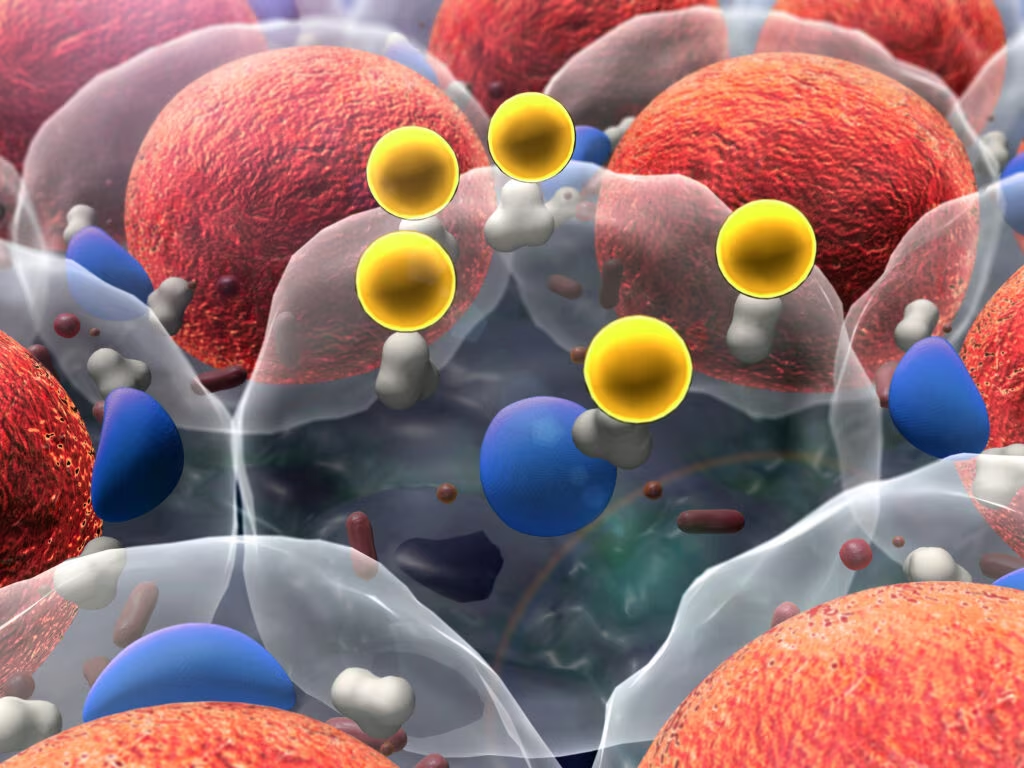Search Results
Showing Results for invasive adenomas

Hypertension affects up to 40% of the adult population worldwide,1 and according to the World Health Organization’s 2021 estimates, globally 1.28 billion adults between 18 and 79 years are affected.2 Of these, 85% have essential hypertension3 and the remainder have secondary hypertension, which is potentially ...

Pituitary tumours (PTs) are located in the sella turcica, which surrounds the adenohypophysis and neurohypophysis. PTs range from asymptomatic incidentalomas to symptomatic aggressive neoplasms, such as invasive neoplasms or pituitary carcinomas.1 Symptomatic lesions can be characterized either by hormonal overproduction ...

Thyroid nodules are common and frequently benign, with approximately 5–10% being malignant.1 Current diagnostic evaluation of thyroid nodules should include a multidisciplinary approach, integrating clinical, sonographic, cytologic, and molecular analysis. While fine-needle aspiration (FNA) biopsy and cytologic examination have emerged as ...

Pituitary adenomas are benign tumours that arise from the adenohypophysis. They are the second most frequent intracranial tumour type after meningiomas, and account for 16.2% of all primary cranial neoplasms.1 Though likely an underestimate, the incidence of pituitary adenomas is approximately ...

Acromegaly is a chronic disorder characterised by growth hormone (GH) hypersecretion, predominantly caused by a pituitary adenoma.1 Disease prevalence ranges from 2.8–13.7 cases and annual incidence is between 0.2–1.1 cases/100,000 people; however, real incidence is likely much higher.2,3 Average age at diagnosis ...

In 1932, Dr Harvey Cushing published his findings on a series of patients with what he called the “killing disease,” revealing that the median survival for most of his patients was less than 5 years from diagnosis.1 With advances in surgical techniques ...

In 1932, Dr Harvey Cushing published his findings on a series of patients with what he called the “killing disease,” revealing that the median survival for most of his patients was less than 5 years from diagnosis.1 With advances in surgical techniques ...

Acromegaly is an uncommon disorder that, in the vast majority of cases, is the result of a growth hormone (GH)-secreting pituitary adenoma. Because tumors are often macroadenomas at the time of diagnosis, there may be a number of signs ...

Prolactinomas are the commonest pituitary tumours with a prevalence varying from 0.3 to 0.5 per 1,000 in the general population. This affection has a large female predominance and a median age of 30 years at diagnosis.1 Prolactinomas in men are characterised by a larger ...

Acromegaly is an uncommon disorder that, in the vast majority of cases, is the result of a growth hormone (GH)-secreting pituitary adenoma. Because tumors are often macroadenomas at the time of diagnosis, there may be a number of signs ...

Acromegaly Epidemiology and Clinical Manifestations Acromegaly Epidemiology and Clinical Manifestations Acromegaly is an uncommon disorder characterised by the hypersecretion of growth hormone (GH) resulting in an increase in serum insulin-like growth factor-1 (IGF-1) levels. This condition is most often caused ...

Acromegaly Epidemiology and Clinical Manifestations Acromegaly Epidemiology and Clinical Manifestations Acromegaly is an uncommon disorder characterized by the hypersecretion of growth hormone (GH) resulting in an increase in serum insulin-like growth factor-1 (IGF-1) levels. This condition is most often caused ...

Pituitary tumors are common, with an estimated prevalence of 16.7 % in the general population based on imaging and autopsy studies.1 Clinically significant pituitary tumors are more prevalent than previously recognized, with one case per 1,000–1,300 people.2,3 The majority of pituitary tumors are ...

Pituitary tumours are common, with an estimated prevalence of 16.7 % in the general population based on imaging and autopsy studies.1 Clinically significant pituitary tumours are more prevalent than previously recognised, with one case per 1,000–1,300 people.2,3 The majority of pituitary tumours are ...

Most pituitary tumors are non-invasive, benign adenomas that remain confined to the sella turcica. Although there is, at present, no accepted definition of aggressive pituitary adenomas, one would suggest that these have a tendency to recur after initial surgery. They ...

Acromegaly is an uncommon disorder that, in the vast majority of cases, is the result of a growth hormone (GH)-secreting pituitary adenoma. Acromegaly is an uncommon disorder that, in the vast majority of cases, is the result of a ...

Acromegaly is an uncommon disorder characterized by excess secretion of growth hormone (GH), resulting in the classical growth of bone and soft tissues, multi-system involvement with multiple comorbidities, and heightened risk of premature mortality. GH is produced by the somatotroph ...

Prolactin Prolactin is a polypeptide hormone produced and secreted by the adenohypophysis. This hormone is in the family with growth hormone and human placental lactogen; in fact, they are sufficiently homologous to suggest a common ancestral gene. Prolactin Prolactin is ...
Latest articles videos and clinical updates - straight to your inbox
Log into your Touch Account
Earn and track your CME credits on the go, save articles for later, and follow the latest congress coverage.
Register now for FREE Access
Register for free to hear about the latest expert-led education, peer-reviewed articles, conference highlights, and innovative CME activities.
Sign up with an Email
Or use a Social Account.
This Functionality is for
Members Only
Explore the latest in medical education and stay current in your field. Create a free account to track your learning.

